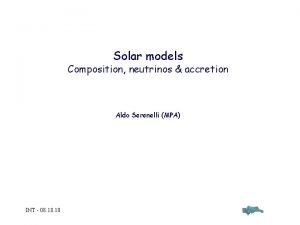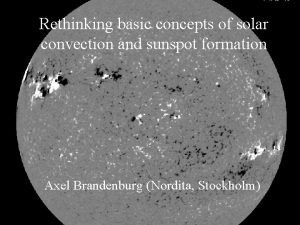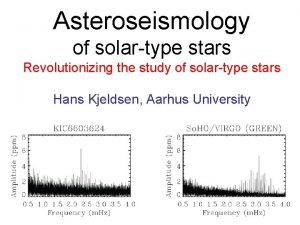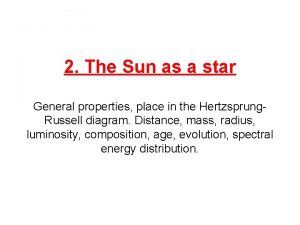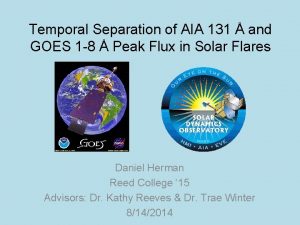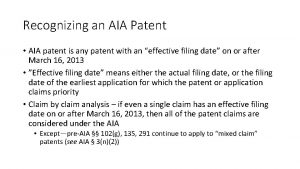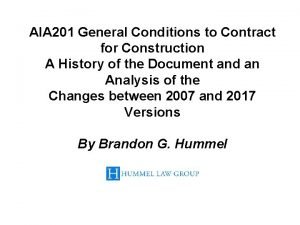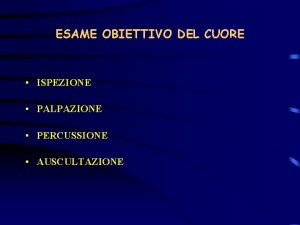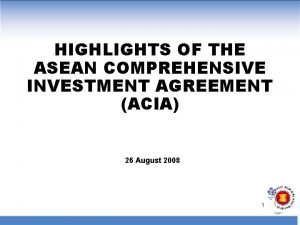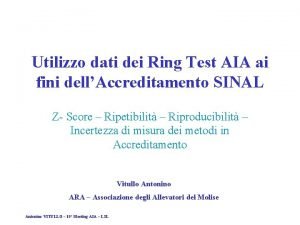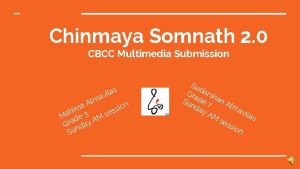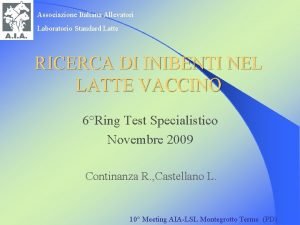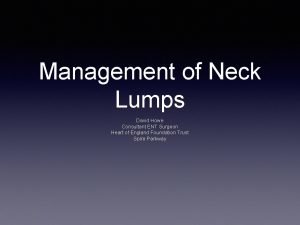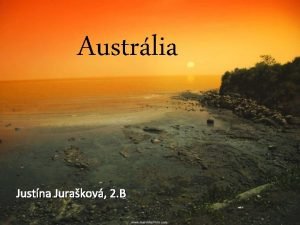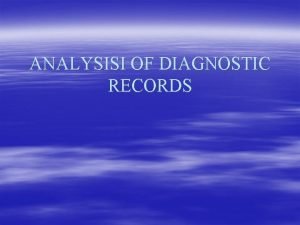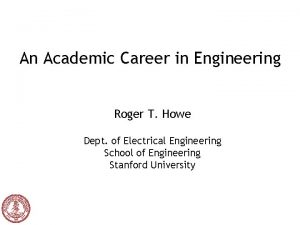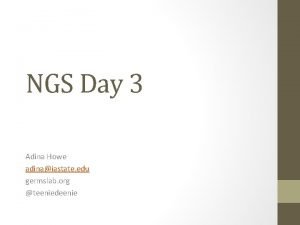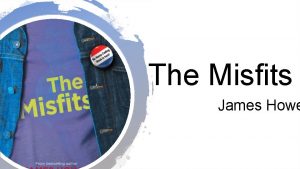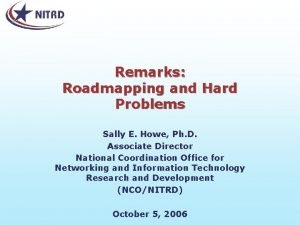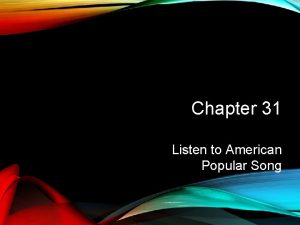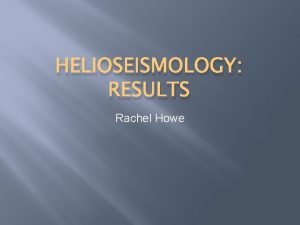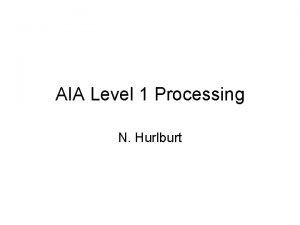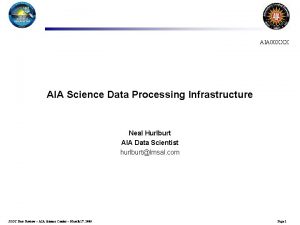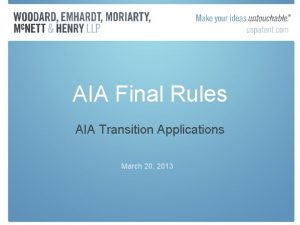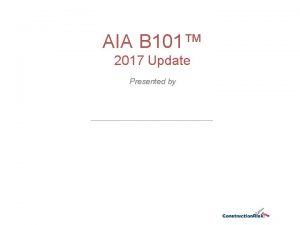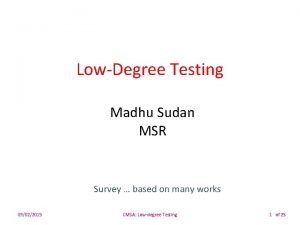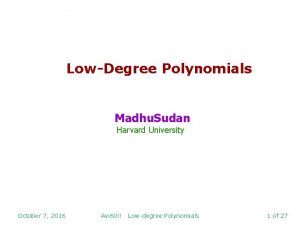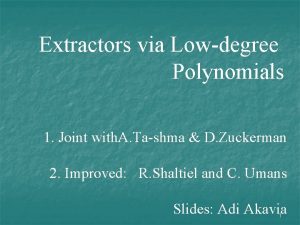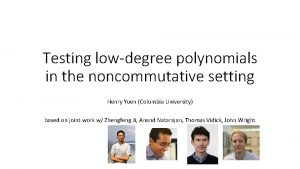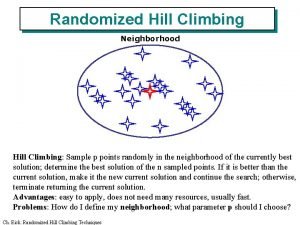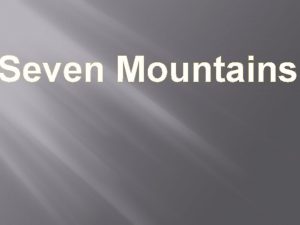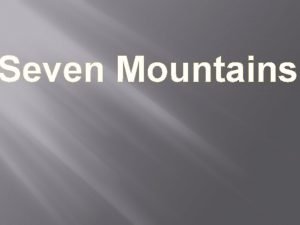Lowdegree Helioseismology with AIA R Howe F Hill







![AIA 1600 (lev 1_test. synoptic[2]) AIA 1600 (lev 1_test. synoptic[2])](https://slidetodoc.com/presentation_image_h2/db9ee2df5a95f53f5161b11bb0677ca7/image-8.jpg)

![AIA 1700 (lev 1_test. synoptic[2]) AIA 1700 (lev 1_test. synoptic[2])](https://slidetodoc.com/presentation_image_h2/db9ee2df5a95f53f5161b11bb0677ca7/image-10.jpg)

![AIA 4500 (lev 1_test. synoptic[2] ) AIA 4500 (lev 1_test. synoptic[2] )](https://slidetodoc.com/presentation_image_h2/db9ee2df5a95f53f5161b11bb0677ca7/image-12.jpg)




















- Slides: 32

Low-degree Helioseismology with AIA R. Howe F. Hill, R. Komm, A. -M. Broomhall, W. J. Chaplin, Y. Elsworth

Introduction � AIA aboard SDO is best known for spectacular coronal images, BUT … � AIA’s 4500 (Visible continuum), 1700 (UV continuum), 1600 (CIV) bands are sensitive to helioseismic modes. � We can use the DATAMEAN keyword to form an l=0 time series without exporting the images. � Results can be compared with HMI and Bi. SON observations.

Data: Sample Images 4500 1700 1600

Querying the JSOC Database

Database query result

Data series � Available data series for AIA are: ◦ aia_test. synoptic: May 1 -11, 18 -20. 10242 images, mean cadence 90 s for 1600, 1700, 4500. ◦ aia_test. synoptic 2 has slower cadence (mean 120 s for 1600, 110 s for 1700, 103 s for 4500) from May 20. ◦ Series aia_test. lev 1 has full cadence from June 09. ◦ 4500 only at 1 h from June 5. � For HMI we use hmi_test. V_45 s and hmi_test. Ic_45 s from May 1. � Bi. SON 0 -d time series, 40 s cadence, May 1 -11. � Concentrate on May 1 -11 (“Period 1”) and June 10 -26 (“Period 2”).

Issues for the analysis � The data release is still in “beta testing” phase: coverage and cadence are irregular. � Ultraviolet channels are sensitive to flares. � HMI data have strong diurnal variation (mostly observer motion, with contribution from nonlinear calibration. ) � Data are interpolated to regular cadence (60 s for AIA, 45 s for HMI), detrended with 15 minute moving mean, and have spikes rejected.
![AIA 1600 lev 1test synoptic2 AIA 1600 (lev 1_test. synoptic[2])](https://slidetodoc.com/presentation_image_h2/db9ee2df5a95f53f5161b11bb0677ca7/image-8.jpg)
AIA 1600 (lev 1_test. synoptic[2])

AIA 1600 (lev 1_test)
![AIA 1700 lev 1test synoptic2 AIA 1700 (lev 1_test. synoptic[2])](https://slidetodoc.com/presentation_image_h2/db9ee2df5a95f53f5161b11bb0677ca7/image-10.jpg)
AIA 1700 (lev 1_test. synoptic[2])

AIA 1700 (lev 1_test)
![AIA 4500 lev 1test synoptic2 AIA 4500 (lev 1_test. synoptic[2] )](https://slidetodoc.com/presentation_image_h2/db9ee2df5a95f53f5161b11bb0677ca7/image-12.jpg)
AIA 4500 (lev 1_test. synoptic[2] )

Bi. SON V

HMI V (55 days)

HMI Continuum Intensity (55 days)

Comparisons with HMI velocity – period 1

Comparisons with HMI velocity – period 1

Comparisons with HMI velocity – period 1

Comparisons with HMI velocity – period 1

Comparison with HMI V: period 2

Comparison with HMI V: second period

Comparison with HMI V: period 2

Comparison with HMI V: second period

Comparison with HMI V: second period

Correlation with HMI V (period 1)

Correlation with HMI V (period 2)

Spectral Comparison: HMI V vs AIA 1700 (period 2)

Spectral Comparison: HMI V vs AIA 1700 (period 2)

HMI V vs Bi. SON power spectra

Discussion and Conclusions � AIA 1600 and 1700 bands (at full cadence) look promising for helioseismology, though slightly noisier than HMI velocity. ◦ Slight phase difference from velocity signal. ◦ May have slightly less power in low-frequency modes, more in high-frequency, than velocity data. ◦ Little or no granulation noise. � HMI velocity has very good signal/noise. � Longer stretches of high-cadence data will be needed to establish the detailed characteristics of the ultraviolet acoustic power spectrum.

Acknowledgments � SDO data courtesy SDO (NASA) and the AIA and HMI consortia. � Bi. SON is operated by the High Resolution Optical Spectroscopy group of the School of Physics and Astronomy at the University of Birmingham, UK, in collaboration with Sheffield Hallam University, UK. It is funded by the Science and Technology Facilities Council (STFC).

About the logo Thanks to Pete Marenfield of NOAO for the artistic finishing touches.
 Helioseismology
Helioseismology Helioseismology
Helioseismology Helioseismology
Helioseismology Helioseismology
Helioseismology Helioseismology
Helioseismology Aia 131
Aia 131 Tutor arbitro
Tutor arbitro Nilai unit equity fund aia
Nilai unit equity fund aia Aia baseball rules
Aia baseball rules Aia
Aia Aia integrated project delivery
Aia integrated project delivery Patent effective filing date
Patent effective filing date Aia 201
Aia 201 Rõngakedrik
Rõngakedrik Aia fort worth
Aia fort worth Percussione torace
Percussione torace Acia asean
Acia asean Antonino vitullo
Antonino vitullo Chinmaya somnath
Chinmaya somnath Aia 360 test menu
Aia 360 test menu Aia standard latte
Aia standard latte Geoffrey howe resignation speech youtube
Geoffrey howe resignation speech youtube Thyroglossal cyst in adults
Thyroglossal cyst in adults Ostrov lorda howe
Ostrov lorda howe Sloping flat roof truss details
Sloping flat roof truss details Bill howe uw
Bill howe uw What is structural steel made of
What is structural steel made of Ashley howe analysis inference
Ashley howe analysis inference Roger t. howe
Roger t. howe Adina howe
Adina howe The misfits james howe
The misfits james howe Howe scale identification
Howe scale identification Faith hill song
Faith hill song
